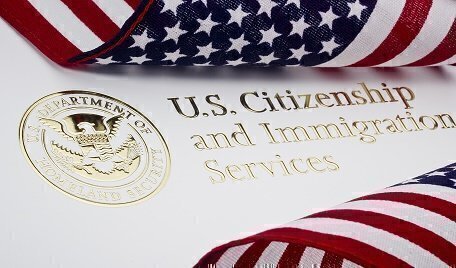The Supreme Court on Wednesday ordered the Trump Administration to allow grandparents and other family members who are foreign nationals from Mideast countries to enter the U.S., but told a lower court to review how many refugees can be excluded. The Justices refused to decide the refugee issue themselves, referring that to the U.S. Court of Appeals for the Ninth Circuit.
 The Court appeared to be unanimous in refusing to clarify its June 26 issue relaxing somewhat President Trump’s March 6 order, and in sending the refugee issue to the Ninth Circuit Court for the first review.
The Court appeared to be unanimous in refusing to clarify its June 26 issue relaxing somewhat President Trump’s March 6 order, and in sending the refugee issue to the Ninth Circuit Court for the first review.
However, the Justices split, by an apparent vote of 6-3, on how much of a federal judge’s order on immigration should be allowed to remain in effect. Justices Samuel A. Alito, Jr., Neil Gorsuch and Clarence Thomas noted that they would have put on hold during court review all parts of the order issued in late March by U.S. District Judge Derrick K.Watson of Honolulu.
The Administration already has pending an appeal at the Ninth Circuit Court, so that can move ahead promptly. Even so, the Justices’ action will delay a final resolution of the scope of enforcement of the Trump restrictions on immigration of refugees from around the globe.
Since Judge Watson issued his latest order, expanding the definition of close family members who could enter the U.S. from six Mideast nations with Muslim majority populations, and expanding the eligibility of refugees to enter if they have ties to this country, the Administration apparently has been obeying that order even while challenging it with appeals to both the Supreme Court and the Ninth Circuit Court.
As a result of Wednesday’s decision by the Supreme Court, the definition of foreign nationals from the Mideast nations who are eligible to enter despite the Administration’s policy will be these relatives of people in this country: grandparents, grandchildren, aunts, uncles, nieces, nephews, cousins, brothers-in-law and sisters-in-law.
That was the way Judge Watson had interpreted the June 26 ruling by the Justices permitting the entry of foreign nations and refugees who have “any bona fide relationship with a person or entity in the United States.” The Administration, when it started carrying out the Justices’ ruling on June 29, decided that the only family members of U.S. residents it would admit were a parent, parent-in-law, spouse, fiancé, child, adult son or daughter, son-in-law, daughter-in-law, sibling (whether whole or half), and “step relationships.”
What now goes before the Ninth Circuit Court is how to define refugees’ eligibility to enter the U.S., if their only tie to this country is that they have been given an assurance by a refugee relief agency that they will be re-settled once they arrived. Judge Watson took the view that such an assurance was sufficient to open entry for a refugee from any country, but the Administration decided that that was not enough.
Even with the dispute going ahead on what such an assurance means for a refugee under the immigration restrictions that can be enforced, refugees who have the kind of family ties that Judge Watson had outlined will be eligible to enter.
Although the Administration has been defending its choices about whom to admit under the authority the Supreme Court granted late last month, it has given several indications that it was most troubled about Judge Watson’s expansion of eligibility for refugees seeking to travel to the U.S. The mere assurance of settlement by a refugee agency would mean, in real terms, that there would essentially be no limits, the government lawyers had argued.
While the government did gain at least a partial victory in keeping that part of the refugee issue alive, at least for further review, the Wednesday order by the Justices was a significant setback. The Administration had argued that only the Supreme Court could clarify what it meant in its June 26 decision, and that is why it turned to the Justices themselves for clarification. Lawyers for the challengers — including the state of Hawaii and 15 other states plus two refugee rights groups — had argued that the Supreme Court has not and will not accept a plea to clarify one of its decisions. The challengers won on that point.
The Supreme Court notified the Ninth Circuit Court immediately of its new order, and that will set the stage for the Circuit Court to set a schedule on how it will handle the assignment given it by the Justices.
One point to note about the 6-3 split among the Justices on the question of whether all of Judge Watson’s order would be put on hold: the fact that only three Justices noted dissent from that outcome does not necessarily mean that there were no others who shared their view but chose not to say so publicly. But the nature of the order itself seemed to suggest that it did require the votes of a majority — five — to take the action that it did.
Meanwhile, the ultimately legality of President Trump’s order is still scheduled for review by the Justices in October, after they return from recess to start a new term. What has now been occurring at the court is only the scope of enforcement of the Trump order that can be enforced in the meantime.
Legendary journalist Lyle Denniston is Constitution Daily’s Supreme Court correspondent. Denniston has written for us as a contributor since June 2011 and has covered the Supreme Court since 1958. His work also appears on lyldenlawnews.com.






